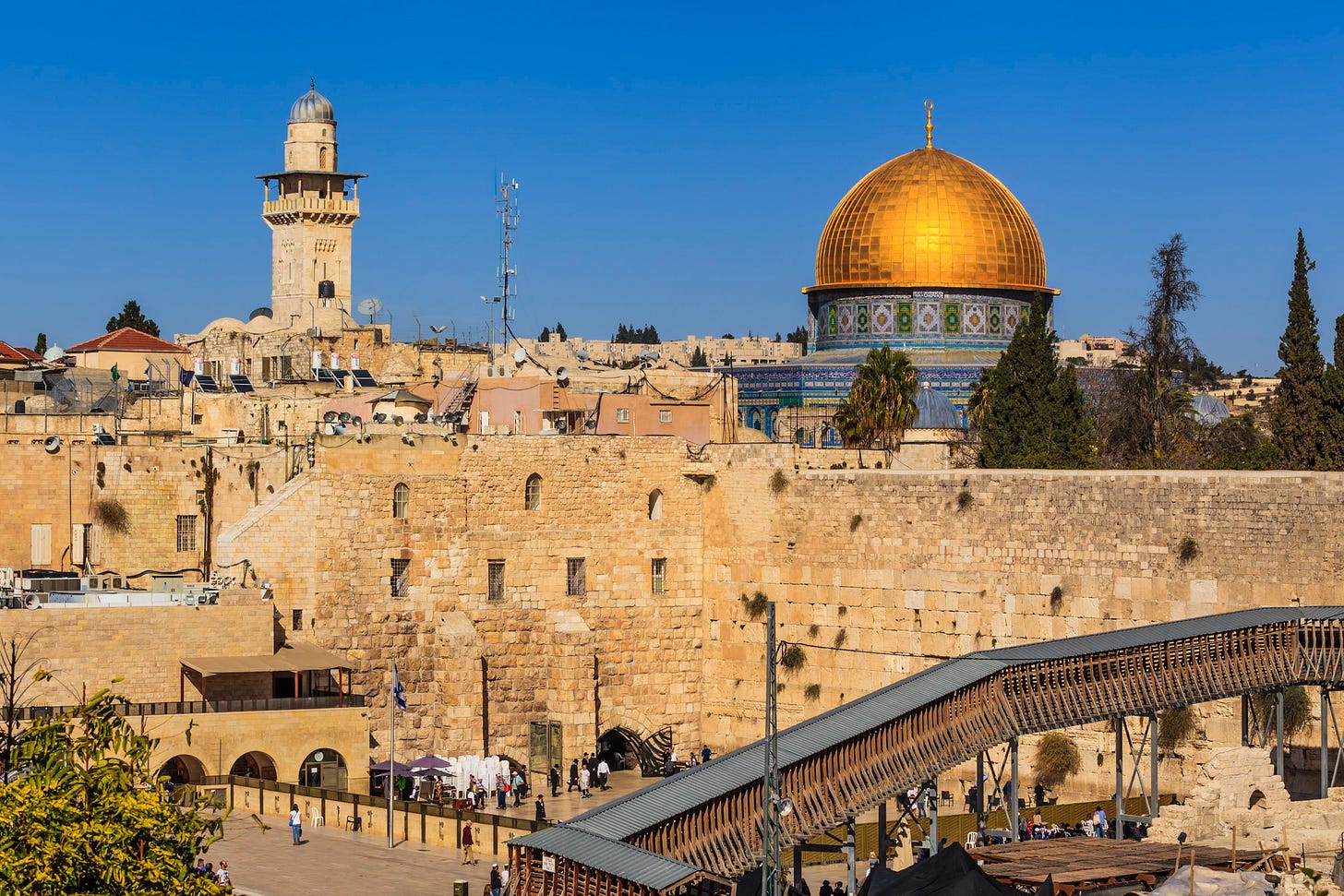4: Israel
Hopeful Despite Conflict
On to our second most hopeful country, Israel. Note that the data presented here was entirely collected before the violence of the past couple of years, though I don’t expect this period to fundamentally change this trend.
Also, please note that this post is not attempting to make any kind of moral judgement about Israel’s behavior towards the Palestinians or on any other issue. This is about measured hopefulness, not current politics.
Here you can see the list of the top 10 host hopeful countries defined by the metric of births per suicide, presented first here.
While it’s worlds away from Peru who’s in a class by itself, Israel is notable for having the highest ongoing rate of positive change in hopefulness and the highest fertility rate of any of the top 10.
So why would Israel be so hopeful?
Religion
As discussed in this post by Ryan Burge, Israel is one of the more-religious countries on Earth. While they’re not an entirely-religious country, a larger-than-normal percentage of citizens are devout. Excluding countries with high infant mortality (as any study on birthrates needs to do) it’s one of the most religious. Further, its religious commitments are unbelievably stable. For 4,000 years the Jewish ethnic group has:
remained distinctive (not ever completely assimilating),
been (mostly) worshipping the same God, and
been focused on (or at least interested in) the same piece of land.
I’ll have a lot more to say about high-tension religious groups in future posts. Israel is particularly distinctive in the relatively high percentage of its citizens who participate in high-tension religious communities. The Haredim, or ultra-Orthodox, make up about 10% of Israeli society. They tend to be the most-energetic and most-enthusiastic elements of any religion. They also tend to grow the fastest, both through birth-and-retention as well as through conversion.
The Haredim have large families, which certainly contributes to Israel’s high birthrate. They also hold the distinction of being one of the half-dozen or so major religious traditions who have specific restrictions around the use of technology. What the exact restrictions are and how they’re enforced varies by Synagogue, but if you want a sense for how widespread they are, just do an internet search for “kosher phones.”
I mention technology specifically because the fastest-growing religious groups in the U.S. since the 1990s all have specific strategies around the use of technology, either fully engaging (like non-denominational churches) or strongly resisting (like the Amish or the Haredim).
Tradition
My first exposure to Jewish traditionalism came when performing fieldwork in Queens, NY. I visited a Kosher grocery store, and the owner proudly told me how that little store had been in his family for five generations. At the local Synagogue, I noticed a whole wall of tiny lights, each light representing a deceased member. Each light was lit on that person’s birthday, to remember them. The experience reminded me of my visit to Quebec and their license plates which say “je me souviens” or “I remember.” Loyalty, memory, and tradition were key values for these New York Jewish communities. They remember who they are.
(Spoiler alert) We’ll learn more about the distinctiveness of New York when we explore hopefulness in the US context.
Shared Struggle
On first glance, one might think that wartime or persecution might weaken the strength of communal bonds. While true genocide can actually wipe out an entire population (this has occurred regularly throughout history), almost anything short of that seems to strengthen groups. People in England during the WWII German Blitzkrieg describe the incredible feeling of solidarity with their fellow English. Citizens of Beirut following their brutal war in the 1990s describe a sadness—despite the relief of suffering—at the loss of that sense of deep personal connection engendered by the war.
In religious traditions, two of the fastest growing religious traditions in history—the early Christian church in Rome and LDS (Mormons) in the U.S.—grew in large part because of the sense of communal solidarity caused by persecution.
While in our current decade Israel is frequently and justifiably seen as a persecutor, in the long history few (if any) other groups in world history have been more-reliably subjected to distrust and persecution than Jews (the idea that a persecuted people would know better than to persecute others is, historically, completely naïve). The reliability of this history suggests that this will continue. The memory of past and certainty of future persecutions is certainly a strong source of ongoing communal identity.
Conclusion
Because of the ability of Jewish culture to weather an unbelievable variety of challenges over the millennia—all-the-while resisting certain kinds of change (such as religious assimilation)—there’s good reason for them to think that they’ll continue to exist as a coherent group many decades (and centuries) from now. In a sense, that’s a good definition of hope: “the ability to see and trust in a positive future for your people.”
And like Peruvians, they share an identity that’s much bigger than themselves.




one example - the Samaritans do not consider themselves to be Jews, but "sons of Israel". What does that mean? Is that acknowledged? Do we hear their point of view? What influence do Christians (i am speaking of ancient Christians, not the modern evangelical version) have? are their points of view recognised or taken into consideration? the Druze? the Sephardic Jews? We hear about the Haredim all the time - but not of the other ancient inhabitants of that land - not to even speak of the Arabic peoples.... And so on. The media in the US is simplistic in their understanding or, perhaps, their desire to blot out the multiplicities of viewpoints and cultures in that land.
interesting that you write exclusively about religion - a human construct - not about faith. Also, you completely ignore (in the blog about Israel) that it is a multi-cultural country that pretends not to be.